
Ara, vay-vay!
As soon as you arrive in Armenia, you discover that many of the most important events in human history began right here.

They say that when the Great Flood brought Noah’s Ark to the summit of Mount Ararat, crowds of welcoming Armenians immediately flocked around it. According to legend, Noah and his household became an integral part of their community, so the Armenians are absolutely sure that the procreator of the human race was one of them. The Bible, Josephus, Nicholas of Damascus, and Marco Polo also provide indisputable proof of this.

But joking aside, Armenia is indeed a very old country with a most magnificent history and culture. It is mentioned in the Bible, it adopted Christianity at the 1 century BC, and it has a unique alphabet (dating back to the year 333), one of the forty-six existing in the world…

The first day, depending on the time of arrival, we will either take a walk around Yerevan, or sleep until the following morning. Flights usually arrive toward evening, or even in the middle of the night.

The main adventures begin the next day. Today we will visit Etchmiadzin, the cathedral-residence of the Catholicos of All Armenians. Until 303, a pagan temple stood on this site. As was the custom in those years, young Christians destroyed everything that existed prior to their arrival and built their own shrines.

The church was originally made of wood. A stone church was built in the 5th century. The frescoes in the interior date back to the 17th-18th centuries

From here, we will go to Khor Virap Monastery located in the Ararat Valley. It is steeped in legend…

Here Gregory the Illuminator was thrown into a deep well for his Christian beliefs and spent 15 long years there. He was later released under unique circumstances and converted Armenia to Christianity in 303 BC.

On the way back to Yerevan, we will stop by Auntie Annush’s for lunch. We will learn more about everyday Armenian life, enjoy the most delicious dolma…and all the trimmings.

If we don’t linger too long, we will have time to do some tasting at the famous Yerevan Ararat Brandy Factory. Armenian brandy is world-renowned. It has retained its supreme quality for centuries.

In the evening we will dine in a restaurant that serves delicious traditional Armenian cuisine. There will also be singing and dancing, all very beautifully performed!

On the third day, we will get up early and go for a ride in a hot-air balloon. Our destination is a mountain plateau located 25 km to the north of Yerevan.

We need to start no later than seven to take the hour-and-a-half flight and land before the sun warms up the earth.

We will fly over a mountain canyon and arrive at the Sun Temple in Garni. If we catch a fair wind, this is the beautiful view we will see…

…and we will land right next to the temple. If not, we will land somewhere close by and, after being ceremoniously initiated as balloonists, drive to the temple in vehicles. The Sun Temple was built in the Hellenistic style during the first half of the 1st century BC. It has survived magnificently to the present day.

Nearby is the cliff monastery of Geghard (which means “spear”). It was founded in the 4th century BC, but was not completely built until the 12th century. The monastery gets its name from the spear that pierced Christ’s body as he hung on the cross. According to legend, the spear was brought to Armenia by Jude the Apostle (Thaddeus) and is currently kept in the Etchmiadzin museum.

After we return to Yerevan, we will take an excursion to the Noy Brandy Factory and, of course, enjoy some tasting. This makes for a wonderful end to the day, especially since we have something to compare it with.

The next day, we say goodbye to Yerevan and head for the Armenian-Georgian border. On the way, we will stop at Lake Sevan, take a tour of the environs, and visit the Sevanavank monastery (9th century).

We will have lunch in the Raft restaurant, where we will be served the most tender trout we have caught ourselves after going out on the lake in a catamaran. Then we will continue our journey.

We arrive in Tbilisi late in the evening. We will dine in one of the taverns of the Old City and then turn in for a good night’s sleep.

The next morning we will take a walk around Old Tbilisi. It has stood for 1,500 years in the same spot and becomes more beautiful with each passing century.

We will go to the sulphur baths district, where Tbilisi essentially emerged in the 5th century. This is a very interesting story, but we will save it until you get here.
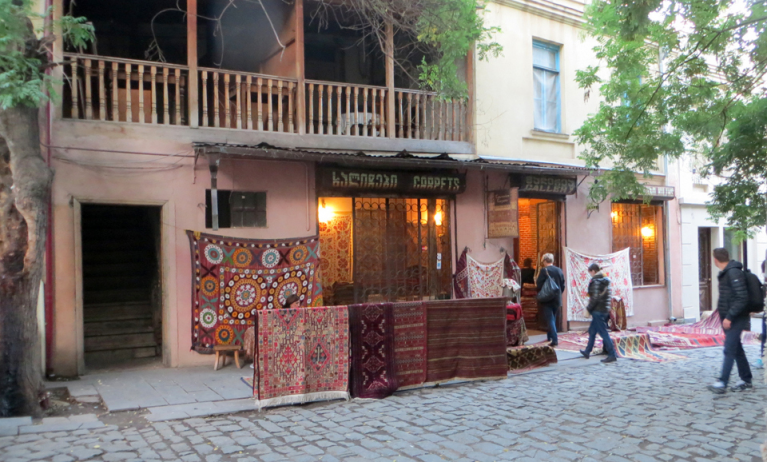
We will stop by a nearby carpet store. You don’t have to buy anything, but it is a very colorful sight.

Here we descend into a cellar where they make lavash, Georgian bread baked on coals. When we were kids, there was nothing more delicious than hot lavash soaked in pear lemonade. You will also be able to try some.

And this is Natia. She knits woolen dolls using an old Georgian technique called “teka.” These Georgian dolls are made especially for us. And we give them to our guests. Natia has agreed not to make these kind of dolls for anyone else. So this is an exclusive!

Then we will stop by an ordinary Tbilisi courtyard. This is how people in our city lived at the end of the 19th-beginning of the 20th centuries. Now, of course, the city architecture has dramatically changed. But no one who lives in these seeming hovels wants to move for love or money. They have their own unique style and ambiance.
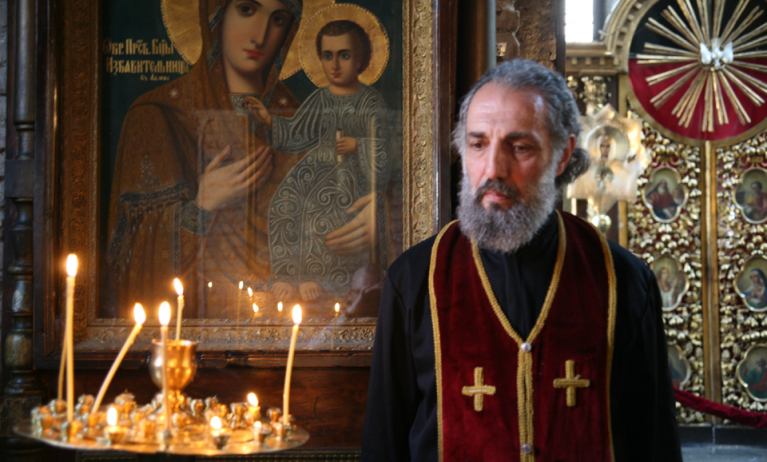
If you like, you can stop by an olden-day church and see Father Rostom. He used to be a stage director, then one day he up and became a priest. He is also part of the Old City. Talking to him is a pure delight. And he never turns anyone away…
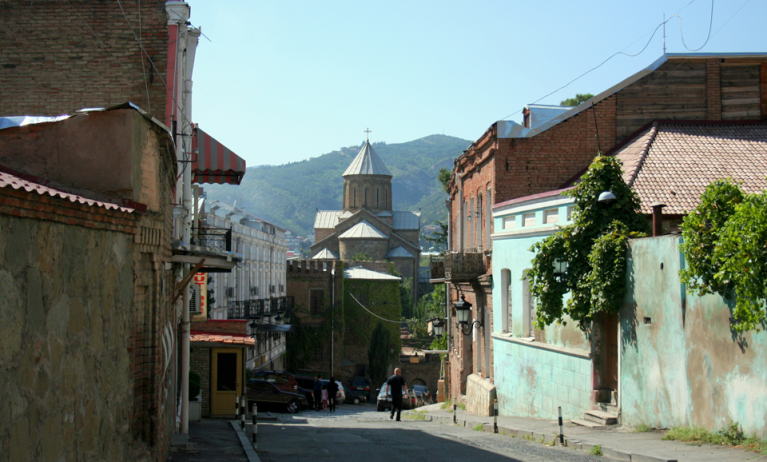
And all of this beauty is found in one small area. But that does not mean it is the only one. There are many streets with the same special ambiance. And in our city, they all “lead to the temple.”

Then we set off for the town of Mtskheta. It is the olden-day capital of Georgia. This is where Georgia’s conversion to Christianity began in the first half of the 4th century. The Svetitskhoveli Cathedral is one of the main Christian shrines. It was built in the 11th century on the site of Georgia’s first Christian church.
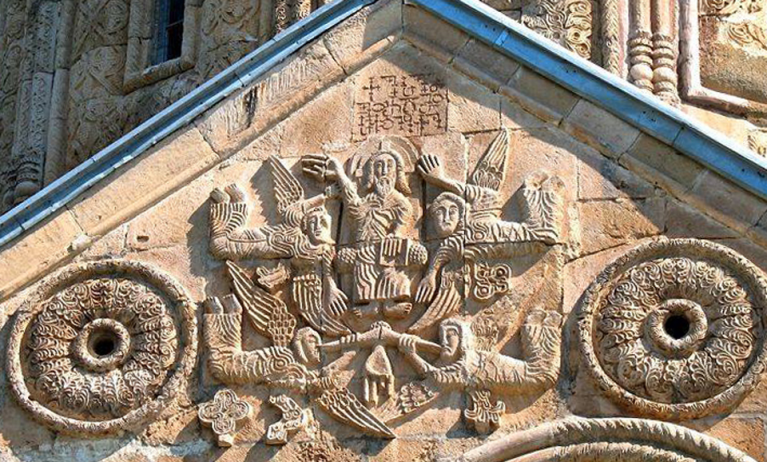
The exterior of the church is decorated with carved stonework that blends Zoroastrian, Christian, and ancient Georgian solar symbols into an intrinsic whole.
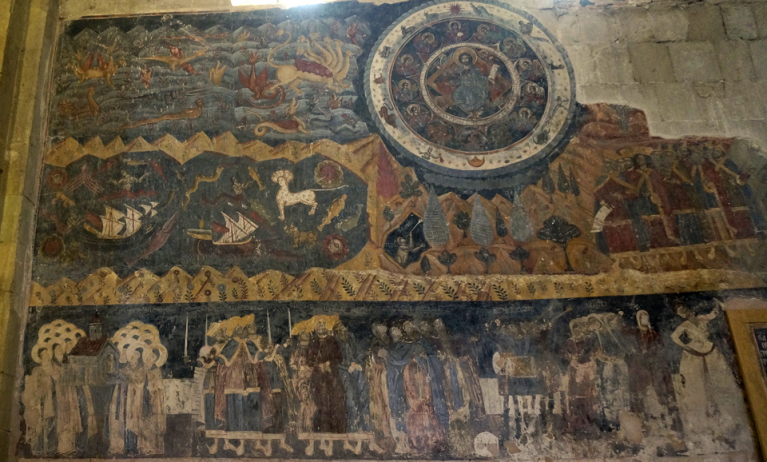
The interior is decorated with unique 17th-century frescoes. Many of them have survived in their pristine state. This particular one portrays Jesus Christ surrounded by his apostles, each of which corresponds to a specific sign of the Zodiac. Have you ever seen anything like this before?!

This man is also history, and ancient history to boot. He has been sitting here and singing folk songs to people for several decades now. He does not ask for money. If someone gives him some, all well and good. If not, he will sing for free.

And this is the Cross Monastery (Jvari). It was built in the 6th century and monastic life continues here to this day. The monastery was built on a high mountain that rises above Mtskheta. At the foot of the mountain, two rivers, the Kura and Aragva, converge. This spot is held in high esteem in Georgia.

This ends our tour around the two capitals. We return to the hotel, have a rest, and then go for dinner in one of the distinctive taverns of the Old City serving excellent national cuisine.
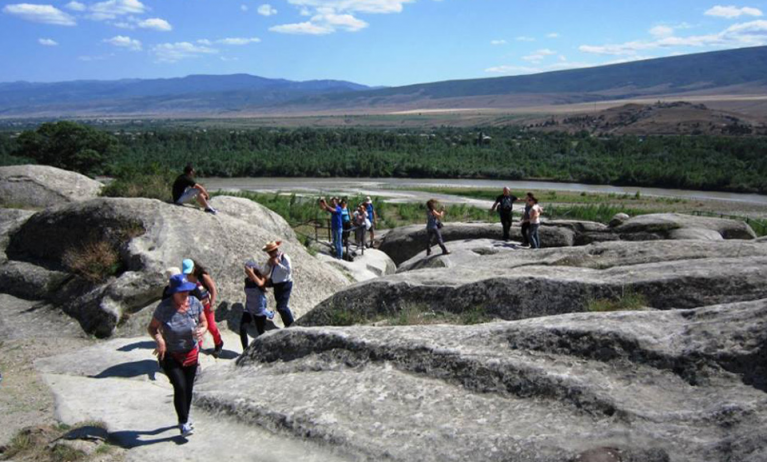
The next morning, we will head for Uplistsikhe. It is a cave town not far from Gori that arose on the banks of the River Kura at the end of the 2nd century BC. The town was entirely hewed into the volcanic cliff. It has streets, squares, palaces, churches, residential buildings, a theater, shops, an apothecary, and wine cellar. There is information about how Uplistsikhe, which was the capital of the Iberian kingdom for a long time, has ties with Media and Urartu.
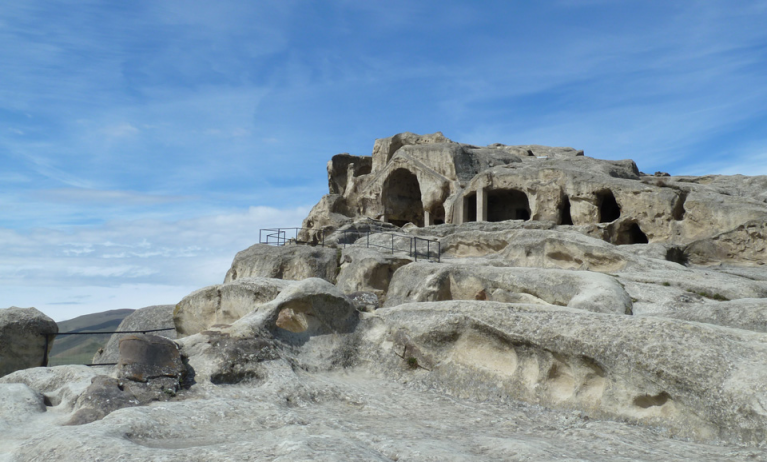
Uplistsikhe lost its status at the end of the 4th century BC, when the capital was moved to Mtskheta. However, it was during Bagrat III’s coronation at the end of the 10th century that the word “Sakartvelo” was first heard, which became a symbol of Georgia’s unification and the country’s self-designation.
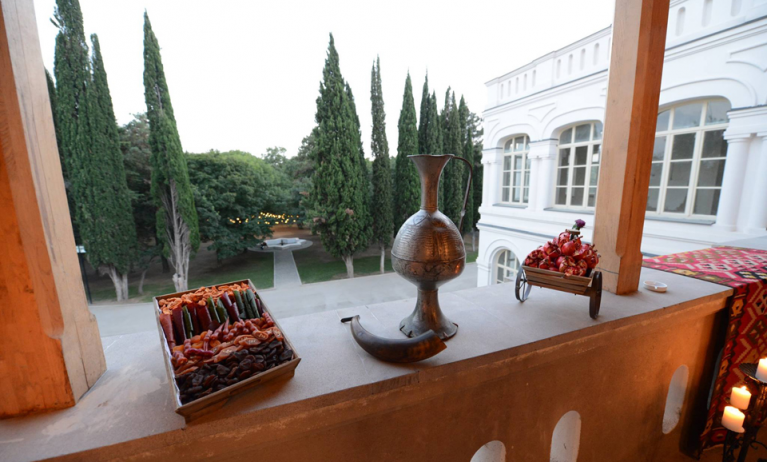
On the way back to Mtskheta, we will stop by Chateau Murkhani, which is one of the leading manufacturers of Georgian wine. The factory and wine cellar are located on the grounds of the former palace of the Bagrationi princes.
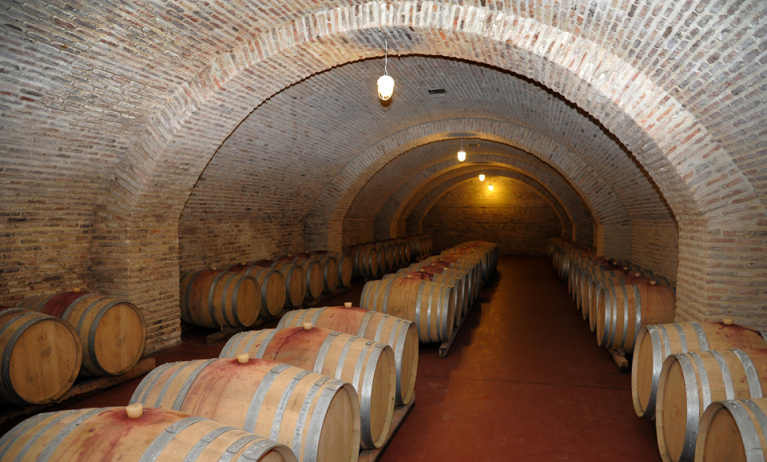
First we will take a walk through the cellars where the wine is kept and listen to the history of the Bagrationi wines. It is very interesting and well worth our time.
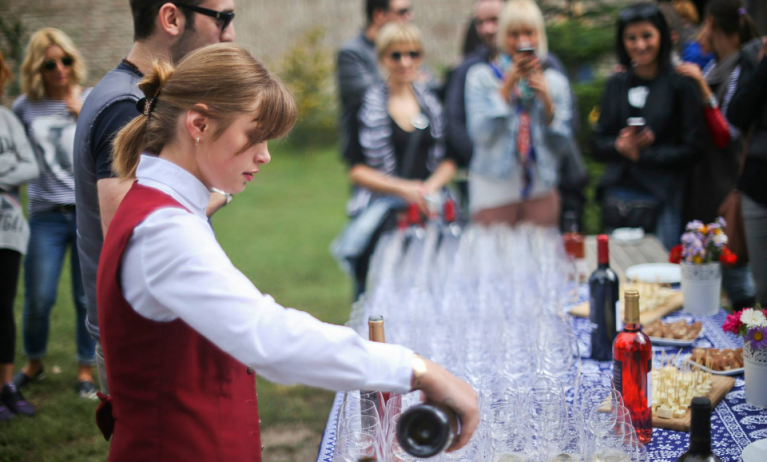
Then we will taste several brands of dry wine.
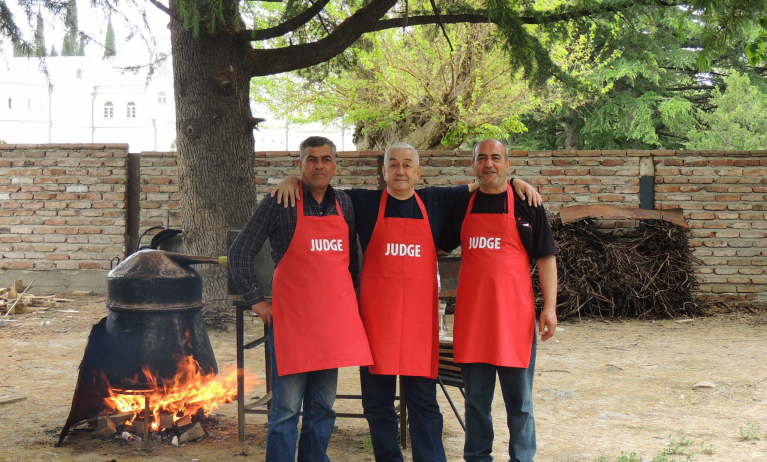
And toward the end we will make our own chacha and barbecue, which will be part of our lunch.

In the evening, we will go to the sulphur baths. They are situated in the very center of the Old City. Thermal springs have been gushing from under the ground here for thousands of years. This is in fact where Tbilisi began.

As Alexander Pushkin said, “I have never seen anything more magnificent than the Tiflis baths in my life!” Alexander Duma fully concurred with him!

The next day, we will set off for the Alazani Valley, the center of Georgian wine-making. The road passes through the picturesque Gombori Pass. At the top of the pass, we will make a short stop to fill a horn with wine and raise a toast to the beautiful view.

This is where we will stay. There is enough time to dump our things and then continue our tour.
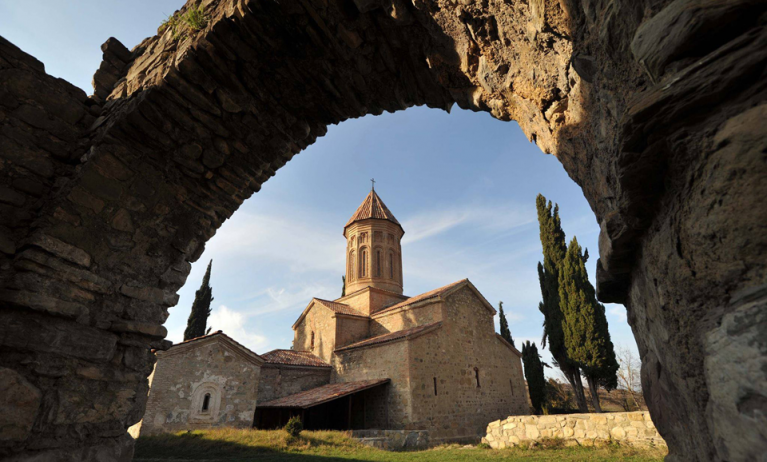
We will stop by Ikalto (6th century). In the Middle Ages, this monastery was a spiritual academy. Theology, philosophy, history, geography, rhetoric, and poetry were taught here. Shota Rustaveli, the author of The Knight in the Panther’s Skin, was one of its students.
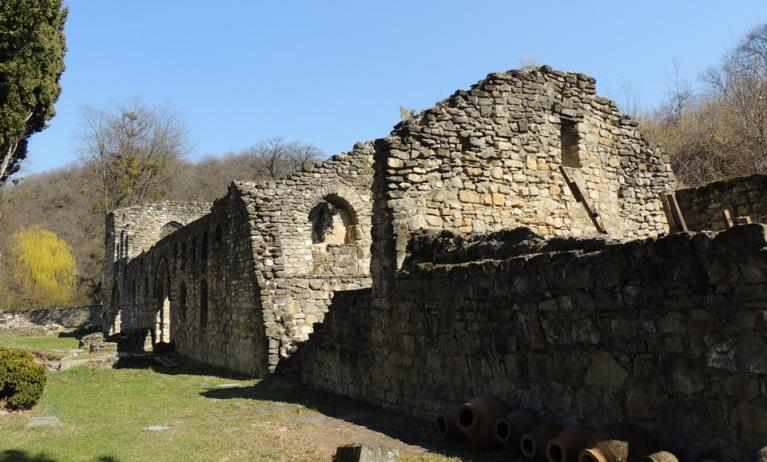
In addition to learning about the monastery’s history, we will find out how the medieval monks made wine. The monastery’s winery, grape press, and underground jugs have survived here in their pristine state.
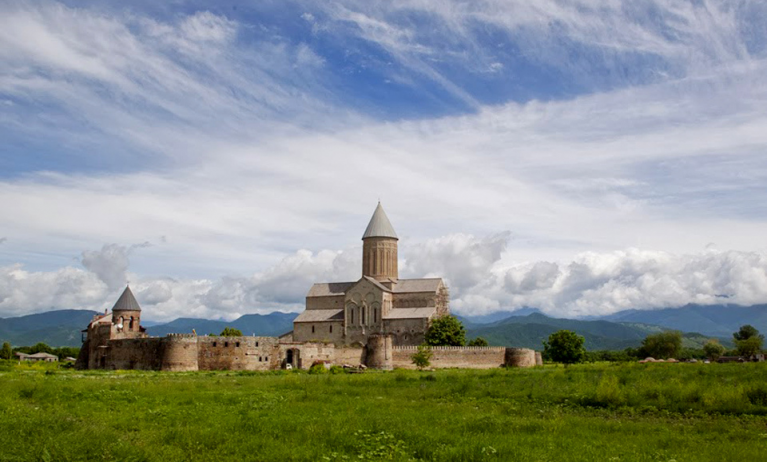
Then we will go to the Alaverdi Monastery. Monastic life began here in the 6th century when Reverend Joseph, one of the Thirteen Assyrian Fathers, settled in these environs. In the 11th century, the monastery was built at the site of a small church erected by Joseph.

It is one of the most venerated places in Georgia. Monastic life has continued here since the time the hermitage was founded. The interior of the monastery church is decorated with medieval frescoes. The relics of the saint also repose here.

After we return to the hotel, we will rest, and prepare for dinner. It will be accompanied by Georgian singing and dancing. If we like, we can join in.
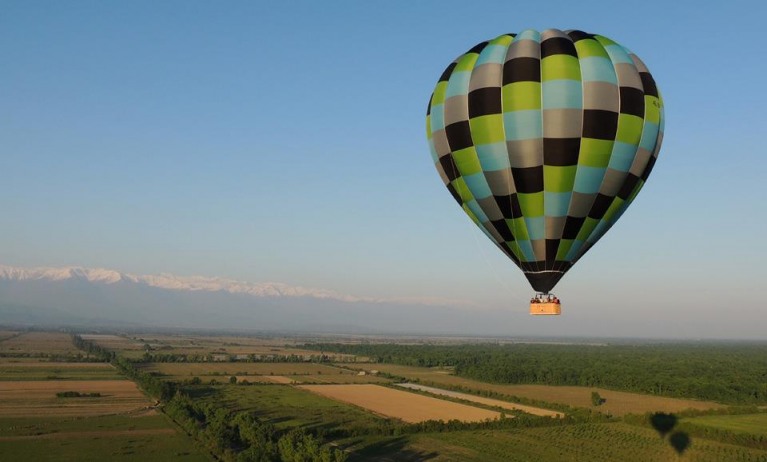
The next morning we will get up early and go for a ride in a hot-air balloon. We will fly low over orchards, vineyards, lakes, and the river, and then rise to a flying altitude and travel along the Great Caucasian Mountain Range.

After the flight, we will take a drive through the Alazani Valley. There are plenty of sights to see. We will begin with the Gremi Fortress (15th century). In the Middle Ages, it was the summer residence of the Georgian czars.
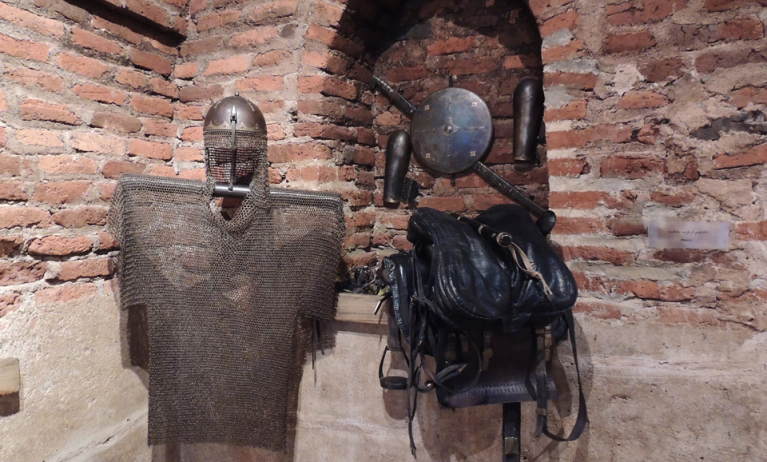
Here there is a small museum displaying exhibits beginning from the 2nd century BC to the late Middle Ages.

And the walls of the church are decorated with frescoes of the 8th-9th centuries.
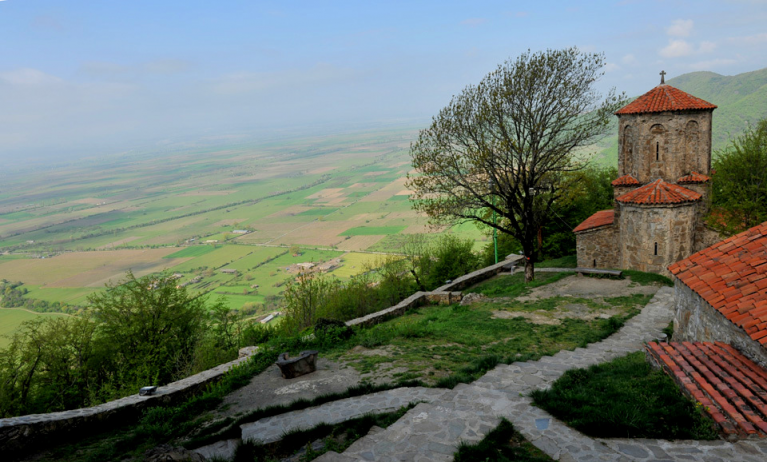
Then we will go to the Nekresi Monastery (6th century). It is built high on the slopes of the Great Caucasian Mountain Range. We will see ancient frescoes, visit the monastery winery, and listen to the story of how the local monks managed to save the monastery from devastation during the onslaught of Muslim conquerors…

We will have lunch at Auntie Nunu’s wine museum. The museum features a collection of wine-making items, beginning from the middle of the first century BC. It is also an ancient wine cellar.

The excursion begins with making a traditional Georgian delicacy called churchkhela (nuts covered with a thick layer of congealed grape juice on a string).
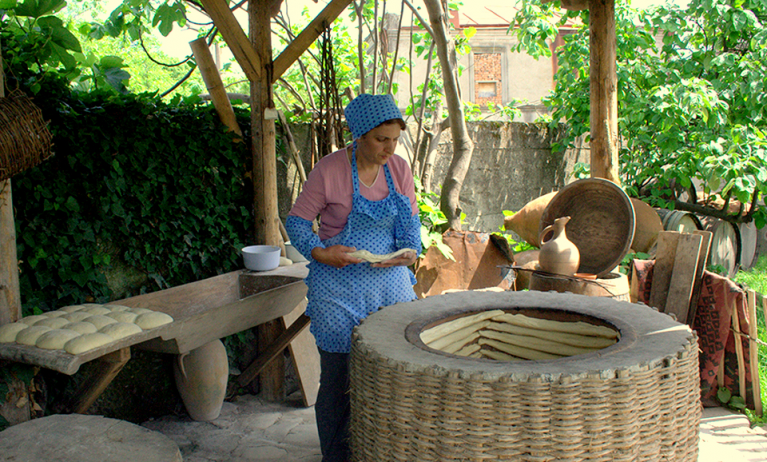
Then we will be shown how to make lavash, Georgian bread baked on coals in clay ovens. The guests take active part in the preparation process.
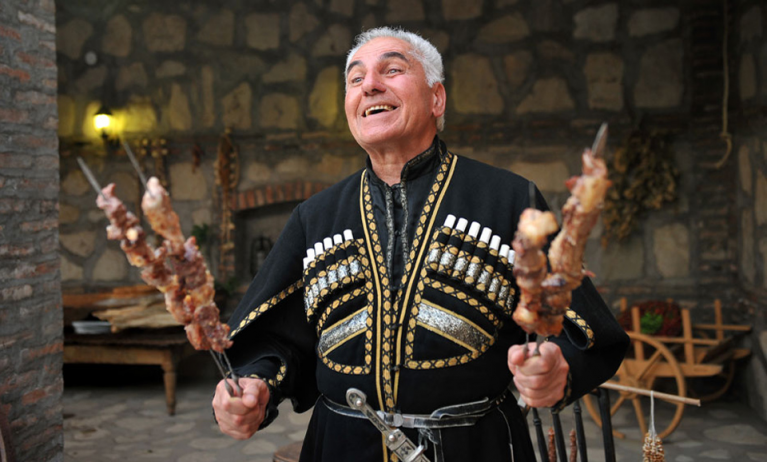
The feasting ends when the guests have drunk their last glass of wine. After lunch we will return to the hotel and rest.
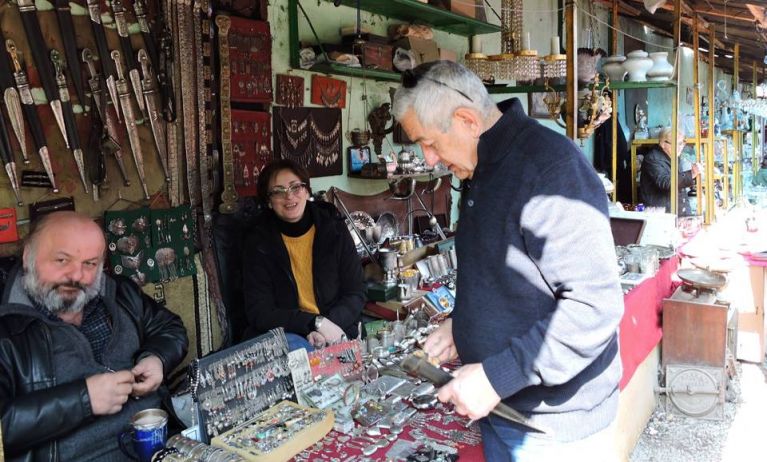
On the morning of the last day (depending on the time of departure), we will either go straight to the airport or make a trip into Tbilisi. In the second case, we will go souvenir shopping at an antique market called Dry Bridge. At one time, the Kura River ran under this bridge. But at the end of the 19th century, its channel was diverted several hundred meters and the bridge was left “dry.”
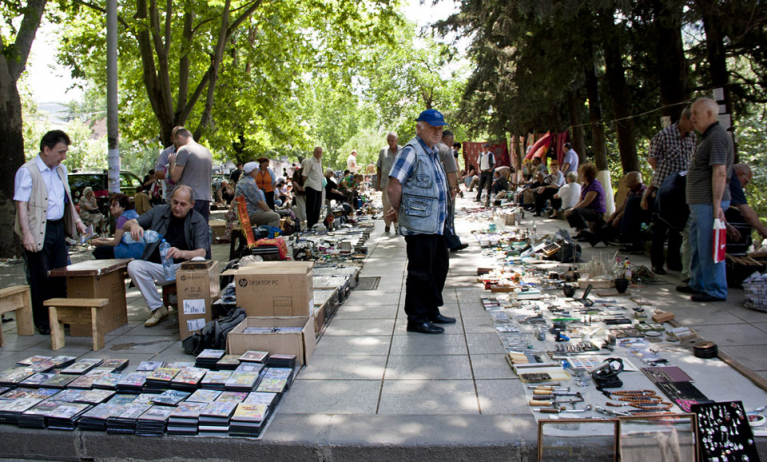
Here you will find souvenirs to suit every taste, as well as antiques: olden-day weapons, military awards, jewelry, carpets, and crockery. And all at very reasonable prices. Then we will have lunch, after which, we will head for the airport.



 30-3, Vladimir Gabashvili st. 0162 Tbilisi, Georgia
30-3, Vladimir Gabashvili st. 0162 Tbilisi, Georgia (+995 599) 40 66 99
(+995 599) 40 66 99 info@skytravel.ge
info@skytravel.ge
